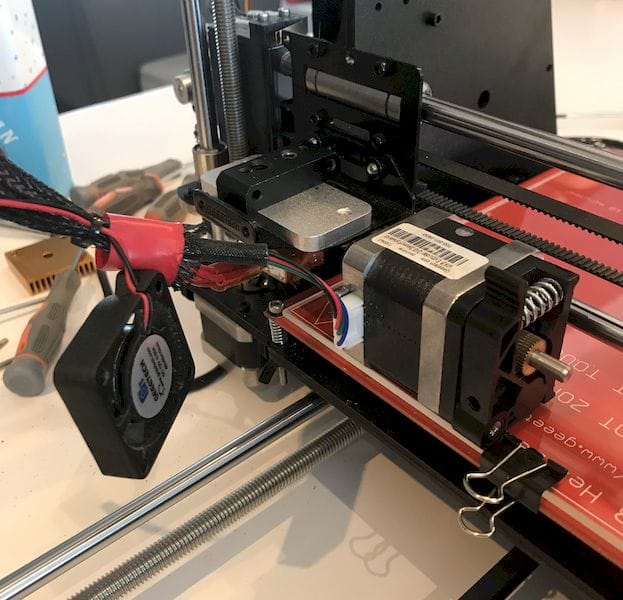![A broken 3D printer under repair [Source: Nicole Woelke]](https://fabbaloo.com/wp-content/uploads/2020/05/image-asset_img_5eb09fc5a2347.jpg)
This week’s question relates to the inevitable question, “who fixes my broken 3D printer?”
Fabbaloo friend Nicole Woelke is a newcomer to 3D printing, and somehow ended up with a desktop 3D printer that she and her family are experimenting with.
As all newcomers experience, they’ve had some challenges with the machine. There is a relatively steep learning curve for non-technical folks that takes them through the concepts of digital manufacturing, 3D models, CAD, slicing and the trivia of successful 3D printing. All of this is quite daunting to many people.
Nevertheless, Woelke and family were able to get their 3D printer operating and successfully 3D printed several items. Things were going quite well until they purchased some fascinating glitter filament. The thinking was that this filament would make for some very attractive prints. It’s a normal PLA material, but mixed in with glitter particles.
![The glitter filament [Source: Nicole Woelke]](https://fabbaloo.com/wp-content/uploads/2020/05/image-asset_img_5eb09fc5db464.jpg)
Naturally, the filament jammed the extruder quite badly.
The problem was that the solid glitter particles gradually got caught up in the thin 0.4mm nozzle as the material softened during heating and they clogged it solid.
Fortunately, Woelke has a friend who is experienced in desktop 3D printing, and was able to take apart the machine to access the nozzle. It was eventually cleaned by heating a needle and threading it through the nozzle until the glitter filament bits were excised. Then, of course, the glitter filament went straight to the trash.
![Repairing the broken 3D printer [Source: Nicole Woelke]](https://fabbaloo.com/wp-content/uploads/2020/05/repair-fixing_result_img_5eb09fc620040.jpg)
But after having this experience Woelke asked us:
“I’m a little gunshy of fun filaments now since breaking the printer with the glitter blue filament, but could use some of the basics. Where would I take the printer if it broke again other than my friend? He is so busy and I hate to bother but are there places in the city?”
This is indeed a very good question. Where do you get a 3D printer fixed if you don’t “know someone”?
Very few cities have 3D print resellers equipped with repair departments, but that is one option. In London and New York, for example, iMakr offers repair services. I do know they have accepted machines shipped in from afar for repair in the past. But sending a machine away is often not financially feasible as the cost of sending, repairing and returning the device can sometimes exceed the cost of a new machine!
If that’s the situation, then the correct answer is to buy a new machine. Often the new machine may be better and/or cheaper than the original in any case.
One option is to have the manufacturer repair the machine. This would again require the machine shipped to the likely distant manufacturer, who may replace the machine or fix it. Depending on warranties and service plans purchased, this may or may not be a financially viable option.
Another possibility is to simply find someone able to perform the fix. With the widespread usage of desktop 3D printers these days, there are certainly very skilled people in almost every city who technically could attempt to fix a broken 3D printer. The problem is how to find these people.
Some ideas for finding a skilled repair technician:
-
Ask online in your most-frequently used local discussion forum, perhaps Facebook, Reddit or Twitter.
-
Place an advertisement in a widely-read local buy-sell service, like Kijiji or Craigslist.
-
Visit a local makerspace where you might encounter skilled technicians or those who know who they are.
I’m wondering whether “3D printer local repair” is a viable business concept, at least on a part time basis. For some this might be a thing, but it would require time and marketing skills that a skilled technician may not have.
However, the need for such services will likely decline for two reasons: first, the cost of machines continues to drop, thus increasing the likelihood of financial inviability; Second, the machines are gradually getting more reliable, and thus the need for repairs could slow.
Oh, and there’s one more possibility: fix it yourself! This may require a little bit of learning, though. And tools.











